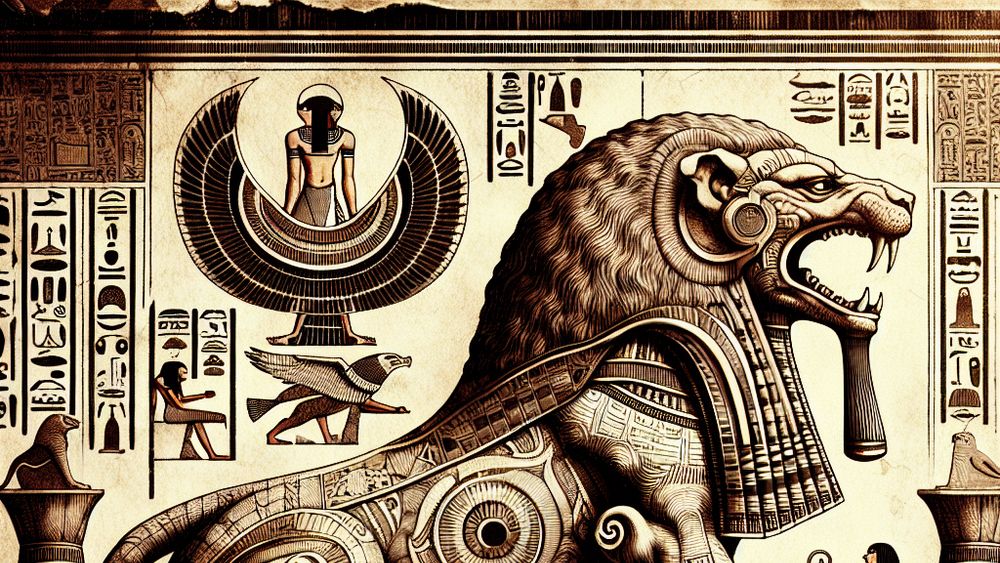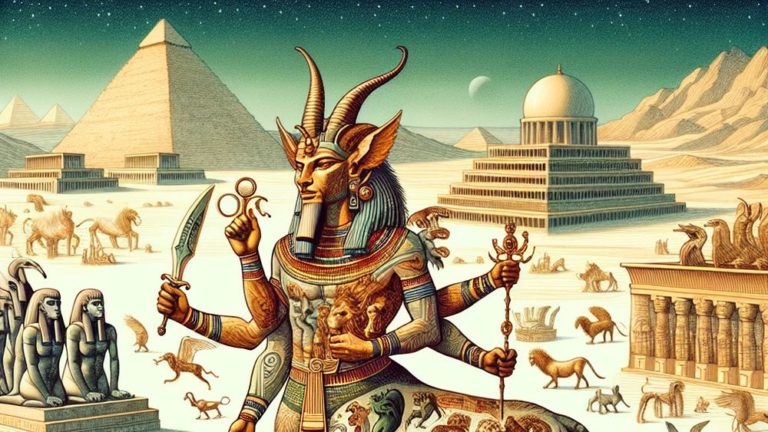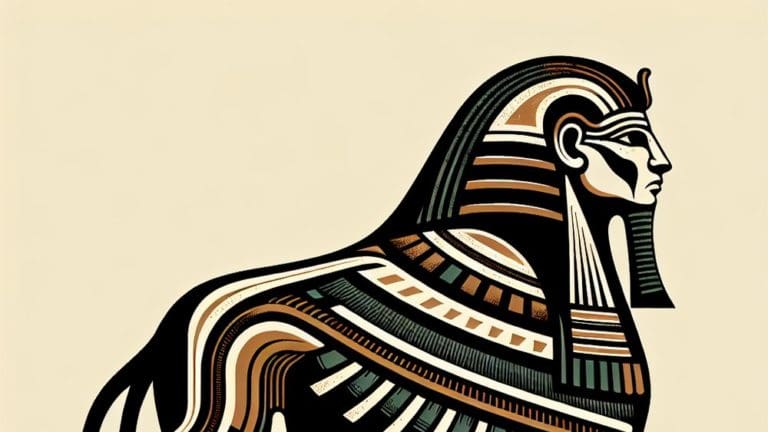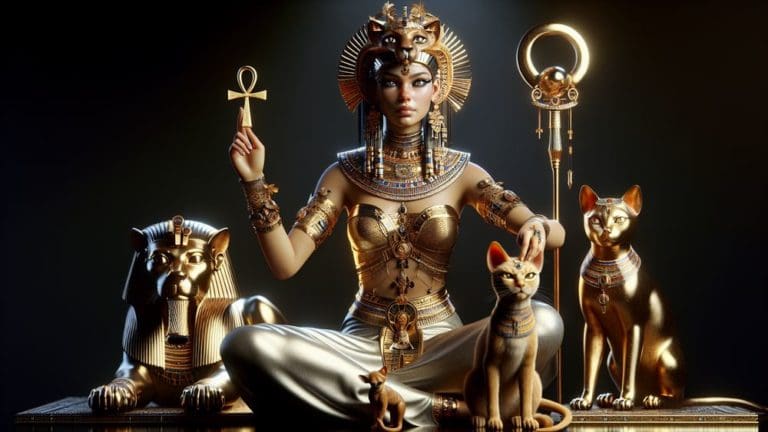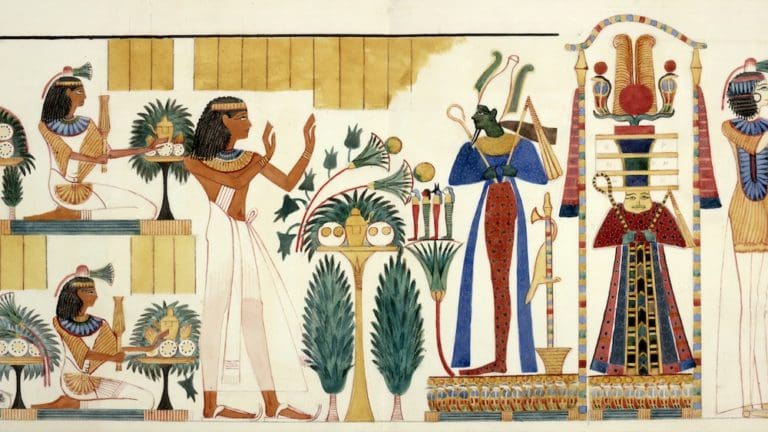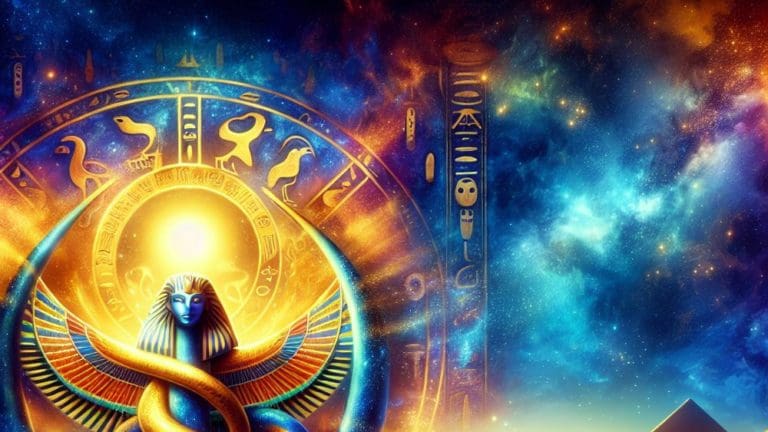Ammit, Devourer Of The Dead In Egyptian Mythology
Ammit, Devourer Of The Dead In Egyptian Mythology
Hey there! If you’re into history and mythology, buckle up because we’re diving deep into the awe-inspiring world of Ammit, Devourer of the Dead. This creature is not your average mythical figure; she’s a fascinating mix of fear and justice from ancient Egyptian mythology. I get it, it’s not every day you hear about a deity that munches on the unworthy dead. But trust me, Ammit’s story is as captivating as they come, blending themes of death, judgment, and the afterlife into an awesome narrative.
Key Points:
- Ammit, Devourer of the Dead, was a fearsome creature from ancient Egyptian mythology.
- Ammit’s name means Devourer or Soul Eater, reflecting her role in judging the dead.
- Ammit had the head of a crocodile, the torso of a lion, and the hindquarters of a hippopotamus in ancient Egyptian art.
- She played a crucial role in the Judgment of the Dead, devouring hearts that failed the test of truth.
- Failing the judgment meant eternal restlessness, loss of identity, and absence from the afterlife.
- Ammit’s legacy extends to modern culture, appearing in TV shows, video games, movies, and books.
- She symbolizes justice and morality, challenging individuals to lead virtuous lives.
In the ancient Egyptian belief system, where the afterlife held a central role, few creatures were as feared as Ammit. Just imagine standing in the divine courtroom, heart pounding, as your soul’s fate hangs in balance. No big deal, right? Wrong. The presence of Ammit added a whole other level of intensity to the judgment process. This intro is just the tip of the iceberg; there’s so much more to uncover about Ammit and her role in deciding the eternal destinies of the deceased.
The Mythological Background of Ammit
Diving into Ammit’s world is like entering a realm where mythology and morality play out in the most vivid ways. I mean, who wouldn’t be intrigued by a creature tasked with devouring the hearts of the unworthy dead? It’s a story that combines fascination with fear, stirring a deep curiosity about life, death, and what comes after.
Origins and Meaning of the Name
So, let’s start with the basics. The name Ammit (also spelled Ahemait) means “Devourer” or “Soul Eater”, which I think we can all agree is pretty straightforward – no sugar-coating here. This name perfectly encapsulates her dreaded role in the afterlife, acting as the final judge of one’s heart and soul.

The origin of such a fearsome name traces back to ancient Egyptian beliefs about the afterlife and balance. In a way, Ammit’s name is a direct reflection of her purpose: to maintain order and purity among the dead by removing those who fail the test of truth.
Ammit’s name reflects her purpose of maintaining order and purity among the dead by removing those who fail the test of truth.
Depictions and Symbolism
Ammit’s depiction in ancient Egyptian art is nothing short of a horror movie protagonist – a frightening yet fascinating combination of lion, crocodile, and hippopotamus. This wasn’t some random choice; each animal represents the strongest parts of what ancient Egyptians considered the most dangerous animals to humans.
| Animal | Symbolizes | Part of Ammit |
|---|---|---|
| Lion | Power and Might | Rear Body |
| Crocodile | Fear and Death | Head and Mouth |
| Hippopotamus | Protection in Chaos | Front Body |
This visual combo emphasizes her terrifying role and powerful stature among the gods, blending features that inspired fear and respect. Essentially, Ammit was the embodiment of the eternal dangers lurking in the afterlife for those deemed unworthy.
Ammit’s Role in the Afterlife
In the grand scale of Egyptian mythological stories, Ammit’s job is both grim and necessary. She sits by the scales during the judgment of the dead, ready to devour the hearts that fail to measure up to Ma’at’s feather of truth.
- First, Ammit watches as the heart is weighed against the feather of truth.
- Then, if the heart is found heavier, thus signifying a life of sin, Ammit promptly devours it.
- This action is not just for show; it erases the soul’s chance for eternal peace, ensuring they don’t enter the afterlife.
Her role underlines the ancient Egyptians’ deep concerns about morality, truth, and the afterlife, emphasizing the importance of living a virtuous life.
The Legend of the Weighing of the Heart
The Weighing of the Heart ceremony is kind of like the ultimate “Final Judgment” show, minus the popcorn. It’s here, in the Hall of Ma’at, that deceased Egyptians faced their biggest test.
The Ceremony Explained
The essence of this ceremony was simple yet profound. Guided by Anubis, the god of embalming, the deceased’s heart was placed on a scale opposite the feather of Ma’at, which symbolized truth and order. It was a ceremony that embodied the Egyptian values of truth, balance, and cosmic order deeply intertwined with their understanding of the afterlife.
Embracing truth and balance in life is essential for personal growth and harmony.
Ammit’s Place in the Judgment Scene
In the ancient Egyptian belief system, the judgment scene was the ultimate test of a deceased’s heart against the feather of Ma’at, symbolizing truth and justice. Ammit, the devourer of the dead, had a pretty gnarly but crucial role in this process. She was the final arbiter, lurking ominously to devour the hearts that failed the test. It’s like, if your heart was heavier than the feather, no more afterlife for you. Instead, Ammit gobbles up your heart, ensuring the soul couldn’t move on to any form of paradise. Imagine that pressure, knowing that Ammit’s jaws could be the end of the line.
Consequences of Failing the Test
So, what happens if Ammit decides your heart is a yummy snack? Well, it’s not exactly a walk in the park. Failing the test had some pretty heavy consequences.

- Eternal restlessness: Your soul wouldn’t find peace.
- Loss of identity: Without your heart, your soul loses its essence.
- Absence from the afterlife: No paradise, no reuniting with loved ones. Just void.
- Fear factor: The very idea of being devoured by Ammit instilled a legit fear of moral corruption among the ancient Egyptians.
This was the ancient Egyptians’ way of instilling moral order. The fear of death by Ammit’s jaws was real, encouraging folks to lead righteous lives.
Failing the test by Ammit results in eternal restlessness, loss of identity, absence from the afterlife, and instills a fear of moral corruption, emphasizing the importance of leading a righteous life.
Ammit’s Influence Beyond Ancient Egypt
Ammit has quite the legacy, transcending the sands of time and making her mark beyond ancient Egypt. It’s fascinating to see how this devourer of the dead has penetrated modern culture, from books to movies, making her way into the hearts and minds of people across the globe. It’s like, even though we’re not weighing our hearts against a feather, Ammit still captures our imagination, embodying justice, fear, and morality in a way that’s both awesome and terrifying.
References in Modern Culture
Ammit’s story is too cool to stay buried in the past. Here’s where she’s popped up in modern culture:
- Television: Shows like “Moon Knight” feature Ammit, bringing her into the living rooms of millions.
- Video Games: Games like “Smite” allow players to embody gods and monsters, including Ammit, bridging ancient myths with digital entertainment.
- Movies: There have been nods to Egyptian mythology, including Ammit, in various films, blending her story with new tales.
- Books: Numerous novels and series draw inspiration from Ammit, intertwining her with narratives exploring justice and morality.
It’s awesome to see Ammit leap from ancient texts into our favorite forms of entertainment, keeping the lore alive.
Ammit in Literature and Media
Ammit’s presence in literature and media is not just a casual nod to Egyptian mythology; it’s a full-on embrace of her complex symbolism. From graphic novels painting her as the ultimate anti-hero to scholarly works dissecting her role in ancient Egyptian religion, Ammit transcends her original mythos. She becomes a figure of intrigue, prompting authors and creators to explore themes of judgment, morality, and the afterlife in innovative ways. It’s like, through Ammit, we’re given a timeless narrative tool to examine our own values and fears about death and what lies beyond.
The Symbolism of Ammit Today
The symbolism of Ammit today is as potent as it was in ancient Egypt, albeit in a slightly different sauce. In a world far removed from the banks of the Nile, Ammit still embodies the universal principles of justice and truth, but with a modern twist. She challenges us to weigh our hearts against the metaphorical feather, urging self-reflection and moral integrity. It’s a metaphorical kick in the butt to live right, reminding us that the choices we make could very well define the legacy we leave behind. It’s awesome how a mythological demon can still hold such a powerful sway in our collective imagination, isn’t it?

Ammit symbolizes the importance of self-reflection, moral integrity, and the impact of our choices on the legacy we leave behind.
FAQs
1. How was Ammit depicted in ancient Egyptian art?
In ancient Egyptian art, Ammit was depicted as a terrifying composite creature. She had the head of a crocodile, the torso of a lion, and the hindquarters of a hippopotamus, which combined the most fearsome attributes of animals that Egyptians feared and respected.
2. What happened to the souls devoured by Ammit?
The souls devoured by Ammit faced the second death. This was a type of eternal oblivion, as these souls were not allowed to proceed to the afterlife and were instead lost forever.
3. Can Ammit be considered a deity in ancient Egyptian religion?
No, Ammit cannot be considered a deity. She was more of a demon or a divine creature whose role was essential in the judgment of the dead, but she did not receive worships or prayers like gods and goddesses in ancient Egyptian religion.
4. How has Ammit’s image evolved in modern interpretations?
Ammit’s image in modern interpretations has become more nuanced. No longer just a symbol of fear, she represents the consequences of our actions and the importance of living a balanced and just life. This transformation reflects a broader understanding of ancient Egyptian culture and mythology.
Conclusion
As we wrap up our dive into the mythology of Ammit, Devourer of the Dead, it’s easy to see why she’s such a captivating figure. She embodies the ancient Egyptians’ values of justice and balance, and her awesome yet terrifying presence in mythology reminds us of the consequences that await at the scales of Ma’at for those not living a life of truth. Ammit’s legend, entwined deeply with the fabric of the afterlife and judgment, continues to fascinate and inspire, showing that even the most fearsome figures have their place in the cosmic order. So, that’s it for now, folks! I hope you enjoyed this journey through ancient Egyptian mythology as much as I did sharing it with you. Keep pondering the mysteries of the past, they always have something new to teach us. Till next time, take care, and keep being awesome! – Cedric

